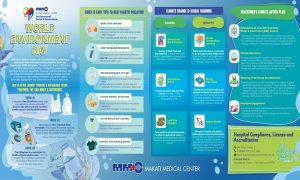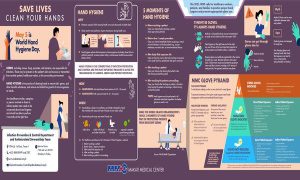Daily Paracetamol Use May Cause More Harm Than Good
Paracetamol is still universally regarded as the safest pain medication in the market. This pain reliever works wonders for seven out of 10 Filipinos who suffer from regular headaches, and over half from muscle aches and pains. It helps with chronic pain management, ensuring that pain does not progress into a more serious condition.
Most people, especially Filipinos, choose to self-medicate. This means using over-the-counter drugs to relieve symptoms without an initial consultation with a doctor. Economics is a major factor as consultations can be a bit expensive. Aside from the costs and inconvenience, there’s also that fear of medical diagnosis that causes one to self-medicate.
While it helps ease the pain, self-medication can have dire health consequences in the long run. Is it really okay to keep popping paracetamols as often as needed or will it cause more harm than good?
What is paracetamol for?
Paracetamol is commonly used by children and adults alike as it is generally safe, cheap, and effective. Pediatricians usually recommend paracetamol because it reduces both fever and joint pains that come with the common colds. It could give children up to 3 hours of relief and takes effect within two hours after drinking the medicine. The recommended paracetamol dosage for children aged 1 month to 12 years is based on ideal body weight. It is 15 mg/kg or up to a maximum of 1g for those with lean body weights, every 4 to 6 hours, with no more than 4 doses in a 24-hour period.
For adults and children older than 12 years, the maximum daily oral dosage of paracetamol is 1 to 2 tablets – or 500 to 1000 mg – every 4 to 6 hours. The maximum daily dose of 4 g in any given 24 hour period should not be exceeded as well.
Paracetamol is generally a safe, non-prescription pain reliever, but misuse and overdose do occur. This is because so many medications contain paracetamol that it’s easy to take too much of the drug without realizing it. Paracetamol is an active ingredient in a number of pain and fever relief medicines and combination medicines for cold and flu. Overdoses happen when a person takes more than one paracetamol-containing medicine.
Is taking paracetamol as safe as we think?
Just like any type of medication, taking too much paracetamol can be dangerous. All pain relievers, prescription or over the counter, have potential risks, especially when taken in high dosages or for a long period. And for paracetamol, one of the main concerns is how excessive dose of painkillers can lead to liver damage that can be fatal and difficult to treat.
A 2017 study by scientists from the University of Edinburgh revealed the possible effects of paracetamol on liver cells. The research found that in certain conditions, paracetamol can harm the vital structural connections between adjacent cells in the liver.
In the United States, paracetamol overdose is the leading cause of liver failure – accounting for about 46 percent of all causes with a 30% mortality rate. In 2015, health authorities in Australia and New Zealand raised concerns over the high number of children, most were 5 years and younger, that developed acute liver failure following medication errors with paracetamol.
British researchers, in a study published in a British Medical Journal in 2015, have also found out that chronic users of paracetamol – those who typically take large, daily doses over several years – may increase their risk of death, or develop complications in the kidneys, intestines, and the heart.
The review included eight cohort studies from US, UK, Sweden, and Denmark.
Two of the eight studies found that long-term paracetamol users have an increased risk of mortality, up to 63%. One study reported that the risk of gastro-intestinal bleeding and other intestinal side-effects was as high as 36%.
In 2011, a similar study by Professor Michael Doherty observed almost 900 patients aged 40 and older who took paracetamol, ibuprofen or a combination of both for chronic knee pain. After 13 weeks, one in five on paracetamol suffered from internal bleeding.
Long-term use of paracetamol may also cause heart problems. The systematic review of eight observational studies showed that four found a heightened risk, ranging from 19 to 68 percent, of cardiovascular problems. Higher doses of paracetamol was also associated with heart attack and stroke, according to another study.
The systematic review also linked long-term use of paracetamol with an increased risk of impaired kidney function. Four studies revealed kidney effects while three found that increased dose result to poorer kidney function. The analysis of all eight cohort studies said that in all cases, the risk was dose-dependent – the higher the dose, the greater the risk.
Avoid Self Medicating
When used correctly and within the right dosage, paracetamol is a safe, non-prescription pain reliever. But it should be viewed as a serious drug and not like a piece of candy that you can pop daily.
When it comes to using over-the-counter drugs or any matter regarding one’s health, consulting a medical expert is still the safest solution. The best way to avoid any health risk is to get a proper diagnosis and treatment plan.








